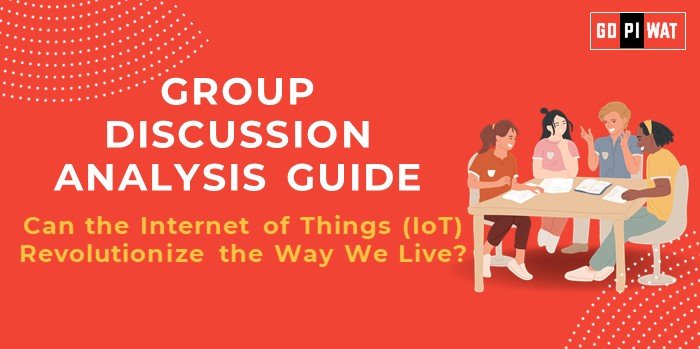📋 Group Discussion Analysis Guide: Can the Internet of Things (IoT) Revolutionize the Way We Live?
🌐 Introduction to the Internet of Things (IoT)
- Opening Context: “The Internet of Things (IoT) interconnects everyday devices, creating a network that seamlessly integrates digital and physical realms. With global IoT spending projected to exceed $1.1 trillion by 2025, it has become a transformative force in industries and daily life.”
- Topic Background: IoT first gained prominence in the early 2000s, revolutionizing sectors from healthcare to agriculture. It drives innovation in smart cities, energy management, and autonomous vehicles, underlining its potential to reshape living standards.
📊 Quick Facts and Key Statistics
- 📈 IoT-Connected Devices: 14.4 billion (2023) – Represents a 17% increase over 2022.
- 💰 Economic Impact: IoT could contribute up to $4 trillion annually by 2030 (McKinsey).
- 🏙️ Adoption in Smart Cities: 41% of cities globally integrate IoT for efficient urban management.
- 📉 Market Growth: IoT healthcare applications are expected to grow by 25% annually through 2026.
👥 Stakeholders and Their Roles
- 🏛️ Governments: Establish regulatory frameworks and invest in IoT-enabled infrastructure.
- 💼 Businesses: Innovate and deploy IoT solutions across industries.
- 👨👩👧👦 Consumers: Drive demand for IoT-enabled convenience and efficiency in homes and workplaces.
- 💻 Technology Companies: Provide foundational technology such as sensors, networks, and cloud platforms.
🏆 Achievements and Challenges
✨ Achievements
- Smart Home Integration: IoT-enabled smart homes improve energy efficiency by 30%.
- Healthcare Advancements: Remote patient monitoring systems reduced hospital readmissions by 20% in 2023.
- Agricultural Optimization: IoT solutions increased crop yields by 15% globally.
- Environmental Benefits: Reduced energy waste by 10% in IoT-enabled buildings.
⚠️ Challenges
- Security Concerns: IoT devices face increasing cyberattacks; 1.5 billion attacks recorded in 2023.
- Interoperability Issues: Lack of standardization complicates device integration.
- Cost Barriers: High implementation costs deter widespread adoption in developing economies.
🌍 Global Comparisons
- 🇪🇪 Success: Estonia’s smart city framework integrates IoT for public services.
- 🇧🇷 Challenges: In Brazil, IoT adoption is hindered by uneven internet access.
📚 Structured Arguments for Discussion
- 💪 Supporting Stance: “IoT enhances productivity and quality of life, driving innovation in every sector it touches.”
- ❌ Opposing Stance: “IoT’s full potential remains unrealized due to privacy concerns and high implementation costs.”
- ⚖️ Balanced Perspective: “While IoT offers transformative potential, addressing security and cost issues is crucial for universal benefits.”
💡 Effective Discussion Approaches
- 📊 Opening Approaches:
- “IoT connects billions of devices, driving efficiency in healthcare, urban planning, and beyond. Can it revolutionize how we live?”
- “With IoT projected to influence $4 trillion annually, the scope for transformation is immense, but challenges persist.”
- 🎯 Counter-Argument Handling:
- Highlight solutions like blockchain for secure IoT communication.
- Use real-world successes like reduced energy consumption in smart cities.
🔍 Strategic Analysis of Strengths and Weaknesses
- ✅ Strengths: Drives innovation, optimizes resource use, fosters smart infrastructure.
- ❌ Weaknesses: Vulnerable to cyberattacks, high implementation costs.
- 🚀 Opportunities: AI integration, expanding into emerging markets.
- ⚠️ Threats: Data privacy concerns, technological barriers in underdeveloped regions.
🎓 Connecting with B-School Applications
- 📌 Real-World Applications: Projects on IoT in urban development, logistics, or healthcare systems.
- ❓ Sample Interview Questions:
- “How can IoT improve operational efficiency in industries?”
- “What measures can address IoT security challenges?”
- 📘 Insights for B-School Students:
- IoT offers lucrative opportunities in supply chain management.
- Collaboration between tech firms and public policy makers is essential.


